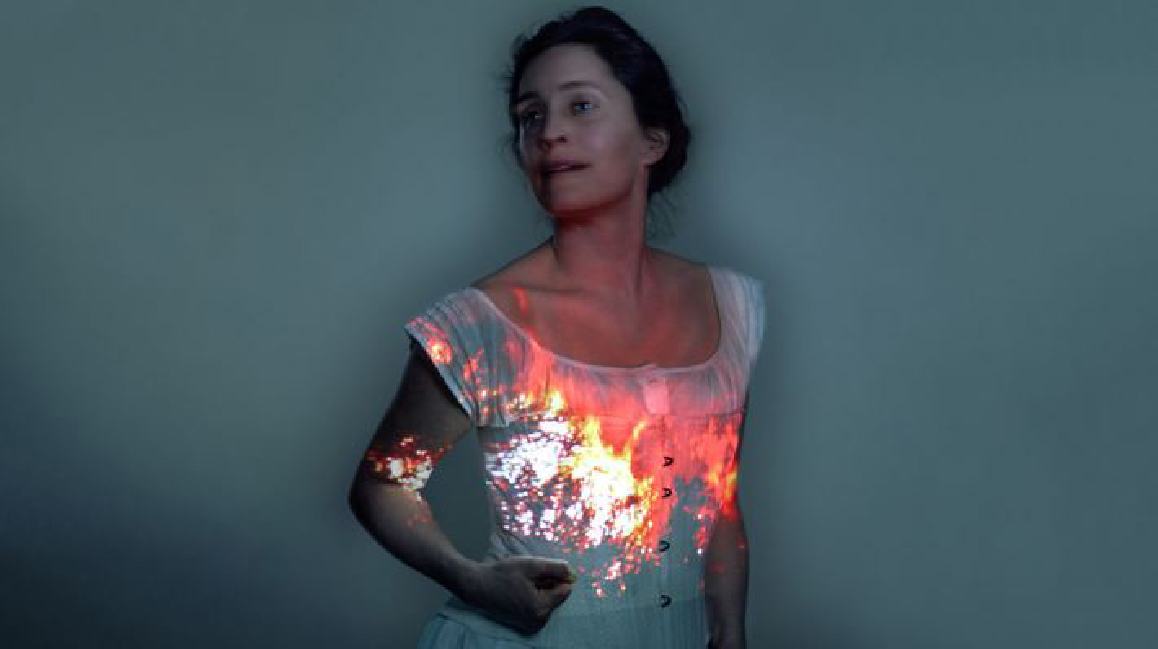Given how many films and TV adaptations there have been over the years it takes real imaginative flair to do something original with this text. Sally Cookson and her team have certainly come up with a different concept.
The Littleton proscenium is presented as a huge white curtained hollow box within which designer Michael Vale has provided a complex arrangement of metal ladders and platforms which encircle a three piece band. These musicians provide a great deal of atmospheric music (composed and led by Benji Bowers), almost continuous sound effects to connote mood and they play ensemble acting roles.
So where is Jane Eyre herself in this ten cast ensemble version which owes some of its ideas to Cookson’s Hetty Feather (which we reviewed in the last issue) and seems to borrow some from Kneehigh’s version of Rebecca directed by Emma Rice? She is born in the first scene. Then Madeleine Worrall (who does a terrific crying baby sound) acquires a grey smock and morphs into the child Jane. The familiar childhood scenes work well enough but Worrall doesn’t really get into her stride until she grows up and goes toThornfield Hall. Her impassioned, independent declarations – almost straight Charlotte Bronte, incidentally – to Mr Rochester (Felix Hayes) are beautifully done. Hayes uses a magnificently deep and immaculately articulated voice for the initially abrupt but ultimately contrite Rochester, calling constantly to his dog Pilot, engagingly played by Craig Edwards. There is compelling chemistry between Worrall and Hayes.
But of course this play is based on a novel which is really about a mad woman in an attic. Melanie Marshall offers an elegant statuesque Bertha Mason in a red silk dress who haunts the action with startling well sung songs. She is a tragic figure but doesn’t seem very mad or dangerous and even when she bites her brother the incident is unconvincing. The fires are effective but it’s hard to believe this elegant woman started them.
This is a stylised Jane Eyre, often symbolic rather than realistic. There’s large downstage trap, for example, into which characters who die disappear. Witty mime evokes the flickering flames of a fire and multiple voices represent Jane’s inner thoughts – an oblique reference perhaps to the fact that the novel the play is based on is a first person narrative. In places the pace feels a bit rushed – possibly because this is a distillation of a Bristol Old Vic which presented Jane Eyre as two plays.
The result is an enjoyable, but not flawless, three and a quarter hours of theatre.
Review by Susan Elkin



